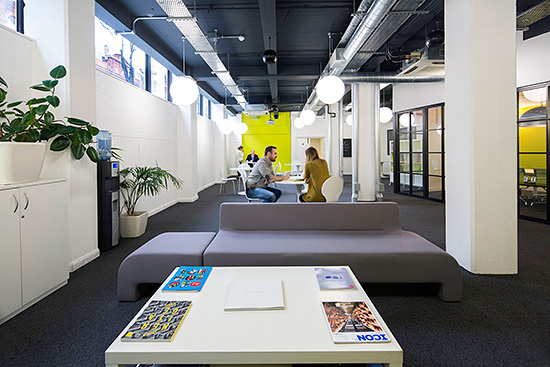Finding the Fit
Finding Talent
As it has always been, referrals from existing staff, and hiring from within are still the major ways of filling new positions. Other traditional but highly effective approaches include using local AIA websites and job boards, advertising in national or local publications, and encouraging both name recognition and contacts through consistent participation in local organizations, events and competitions in the community. But many new tools are also available now for finding and attracting talent.
For every approach, whether it is in print, on-line or building face-to-face relationships in local and national organizations (and ideally it will combine all of those), there are two basic considerations.
• Messages should be worded and images chosen to promote the firm’s business, opportunity and culture.
• What works and what doesn’t should be carefully monitored, since it will vary immensely from place to place.
New graduates: Firms that are most successful at winning the intense competition for brand new architects who are stand-outs in their class usually identify and cultivate them early. Developing and sustaining relationships with schools of architecture, dedicating staff to recruitment, by region or by campus, and including young alums in campus recruiting teams are approaches that help identify and connect with candidates and seal the deal when the time comes to make a choice. For schools of architecture, peer-to-peer sharing of school information has been called the top recruitment tool. Companies can tap into those networks to get to know and recruit graduates, as well.
Social media: Although there may be differences in the impact of social media for different generations – essential for younger generations, less key for older – the distinction continues to blur. Many of the tools are already mainstream, so it’s not a question of whether to use them but how. Newer platforms are also emerging almost every day, but most firms are not lacking in young, tech-savvy staffers who can determine which might be the most effective channel to reach a certain audience, and use it precisely.
The basic tools include Facebook, Twitter and LinkedIn. Visuals-intense platforms like Tumblr and Instagram are also becoming increasingly popular, as would be expected with visuals-intense architects and designers. All the platforms can be used effectively to interact with each other, with the same basic content, information and images being adapted and re-purposed. Making use of a number of different channels extends a message’s reach in an increasingly fragmented social media landscape, where you never know where or how far a post, tweet or image might go.
Using the website: An active, constantly updated website to present the firm’s projects and culture is a basic requirement for marketing to clients, and can be used to communicate to potential hires as well, for example with employment “portals” that showcase the firm’s practice, values and opportunities.
As candidates are doing research, in preparation for interviews or to help make career decisions, the firm’s website will be a basic resource, so targeted information about the practice and the people helps ensure a good match. Once again, content developed for social media – photographs, videos, quotes, tweets, news about events, etc. – can also be used to keep the website fresh and interesting and to reinforce the firm’s messages.
Using external consultants: Also discussed below in more detail, the use of recruitment firms and consultants can be a powerful part of a firm’s strategy for finding the right match. An active recruitment firm might have 40,000 vetted candidates in a database, with very specific knowledge of qualifications, and also of comparable positions in other firms. Many firms use agencies particularly for finding senior personnel or experts in specific fields, where both the firm’s requirements and the candidate’s qualifications are complex and exacting. At the other end of the spectrum, agencies can help find and bring on board part-time or contract professionals more quickly and directly than a busy firm can.

Photo courtesy of Bespoke Careers
First impressions are important for firms interviewing candidates. Special thought should be given to where the interview will take place, and who will conduct it.









